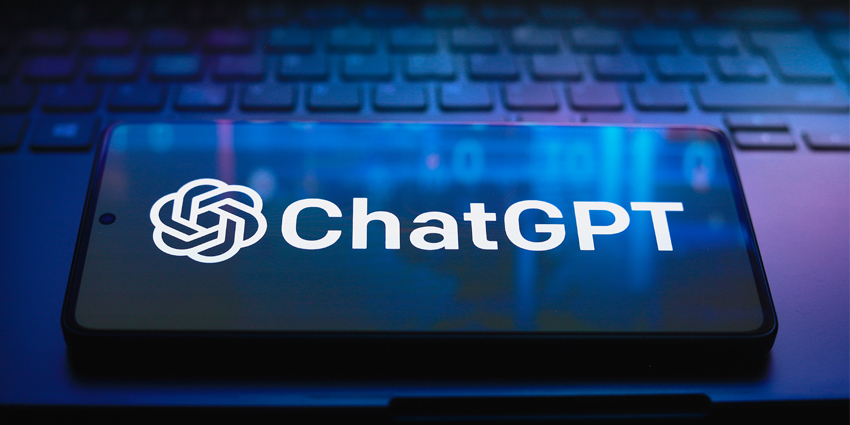Artificial Intelligence (AI) is quickly becoming a must-have component of every business technology stack, offering companies new ways to boost productivity, efficiency, and creativity. OpenAI, with its growing collection of intuitive technologies is clearly one of the key companies paving the way towards a new future of AI adoption. However, comparing OpenAI tools can be complex.
After all, OpenAI doesn’t just offer organizations versatile generative AI chatbots like ChatGPT. The company has a wide range of generative AI tools for business leaders to consider, from DALL-E for image generation to Codex for programming and even Sora for video development.
While there’s nothing stopping businesses from adopting a range of solutions from OpenAI (in fact our own research found 62% of companies are using multiple AI tools at once), you still need to figure out where you’re going to start your AI journey.
This OpenAI tool comparison guide will give you a clear insight into the use cases and benefits offered by OpenAI’s flagship technologies so you can make the right choice for your organization.
- Need help deploying OpenAI’s technology in your organization? Get behind-the-scenes advice with our OpenAI implementation guide. Alternatively, learn how to boost the impact of your OpenAI tools with our top tips for ROI optimization here.
Comparing OpenAI Tools: The Flagship Options
As mentioned above, there are dozens of tools available from OpenAI today, from the world-leading chat solution, ChatGPT, to SearchGPT for research, and Sora for video creation. However, most companies struggling with choosing OpenAI tools will likely start with evaluating three core solutions: GPT-4 (and accompanying LLMs), Codex, and DALL-E.
GPT-4 and OpenAI’s Foundation Models
If you’re looking for the best OpenAI tools for business use cases ranging from content creation to research, customer service, and beyond, the company’s range of GPT (Generative Pre-Trained Transformer) models offers incredible versatility.
The GPT-4 family, including GPT-4o and GPT-4o Turbo, are the foundation models that power solutions like ChatGPT. However, companies can access these models in various ways, using APIs to build and customize intelligent systems.
Each model in the GPT-4 family has its unique benefits, from GPT-4o mini, designed for efficiency and speed, to GPT-4o Turbo, fine-tuned for advanced use cases and complex processes.
The versatility of the GPT-4 ecosystem makes it the perfect option for a wide range of use cases in different industries. For instance:
- Healthcare: Health-focused companies can leverage GPT-4’s advanced algorithms to create bots or tools that streamline data analysis, support teams with diagnostic processes, and even enhance patient communication through intuitive chatbots.
- Finance: In finance, GPT-4 models can power systems that automate report generation, facilitate data analysis, and improve customer service interactions. Some companies even use OpenAI’s models for risk analysis and fraud prevention.
- Education: With GPT models, companies can create bots that power personalized learning experiences, develop multimedia educational content, and deliver always-on tutoring assistance to learners worldwide.
Pricing Models, Strengths, and Limitations
The pricing for OpenAI tools and models can vary, depending on the type of access you need. For instance, anyone can access a limited version of GPT-4o via ChatGPT’s free plan. Or they can upgrade to premium plans for advanced functionality, like ChatGPT Pro, Plus, Enterprise, or Team.
Alternatively, developers can create custom models with GPT-4 APIs. Pricing varies based on your model and the number of input/output tokens you need. For instance, GPT-4o costs $2.50 per 1 million input tokens or $10.00 per 1 million output tokens. GPT-4o Mini, on the other hand, is more affordable, at just $0.15 per million input tokens, or $0.60 per million output tokens.
| Pros | Cons |
| · Versatile functionality for countless business use cases.
· Multimodal capabilities for content creation and data analysis. · Flexible model and pricing options. |
· Per-use pricing can be expensive for some smaller businesses.
· Data privacy issues can be difficult to navigate when customizing models. |
Codex: Designed for Programmers and Coders
Whereas OpenAI’s GPTs are highly versatile, flexible solutions that cater to a wide range of business needs, Codex is a more specific system designed to support coders and programmers. Like all of OpenAI’s generative AI tools for business, Codex takes advantage of underlying language models, like GPT-3.5 – but the models are fine-tuned to understand coding languages.
Codex streamlines the programming and application development process by translating natural language into code and automating tasks like scanning for bugs and errors.
Though Codex is focused on coding, it can still support companies in various industries, such as:
- Technology: In the technology space, Codex can help developers write code snippets, debug existing code, and even convert code into different languages for specific platforms.
- Manufacturing: In the manufacturing landscape, Codex can help companies create scripts for process control systems and machinery, minimizing human error and boosting efficiency.
- Ecommerce: In the ecommerce space, Codex can streamline the development of custom features for websites and shopping applications, improving user experiences.
Pricing Models, Strengths, and Limitations
Codex is accessible through OpenAI’s collection of APIs – with pricing based on usage and specific application needs. Developers can also access additional “assistants” for Codex, like the Open AI Code Interpreter, with prices starting at $0.03 per session.
| Pros | Cons |
| · Significantly reduces code development and debugging times.
· Improves the quality of code for a range of applications. · Reduces the barrier to entry for programming by empowering non-experts to create code. |
· Results can vary and code often needs to be reviewed by experts.
· Better suited to generating smaller code snippers, rather than large-scale systems. |
DALL-E: Image Generation and Design
DALL-E is OpenAI’s text-to-image model, capable of generating unique, highly realistic images from text-based descriptions (or prompts). Although it’s not the only image generation model available today, it is one of the most popular tools available.
DALL-E makes it easy for anyone to create beautiful images for marketing and sales campaigns, design prototypes of products, and so much more. If you’re comparing OpenAI tools with the goal of making your teams more creative and reducing design costs, DALL-E is an excellent choice.
Just like the other OpenAI tools available today, DALL-E supports companies in various industries, such as:
- Marketing: With DALL-E 3, marketing teams can quickly create customized visuals for marketing campaigns, and even convert existing content into new formats.
- Entertainment: In the entertainment space, DALL-E can develop concept art for films, games, and various other media productions.
- Retail: In the retail space, DALL-E can create and optimize images for product catalogs, reducing the need for expensive photoshoots.
Pricing Models, Strengths, and Limitations
Like OpenAI’s GPTs and code-based solutions, DALL-E is available to developers through open APIs, with pricing based on usage (and the version you choose). However, you can also access DALL-E through OpenAI’s ChatGPT subscription plans.
ChatGPT’s free plan, and ChatGPT Plus both offer limited access to DALL-E’s image generation tools. Alternatively, ChatGPT’s Team and Enterprise plans provide expanded limits on image generation capabilities for corporate teams.
| Pros | Cons |
| · Easy to use for beginners, mainly through ChatGPT.
· Flexible API options for developers. · Versatile image generation capabilities for a range of use cases. |
· Image quality can vary depending on your prompts.
· Risks associated with privacy, ethics, and the potential for deepfakes. |
Comparing OpenAI Tools: The Evolving Options
Notably, your OpenAI tool comparison doesn’t have to be limited to the most popular options, like ChatGPT, DALL-E, and Codex. OpenAI’s product collection is huge. Companies can experiment with everything from dedicated solutions like OpenAI Scholar for researchers and students, to Whisper for transcribing speech into text.
Most recently, OpenAI added various new solutions to their portfolio too, such as:
- Sora: Building on the success of DALL-E, OpenAI’s Sora solution transforms text into high-quality video content. This helps businesses create engaging visual narratives for sales and marketing purposes and personalized educational experiences.
- SearchGPT: OpenAI’s SearchGPT is an AI-driven search engine designed to transform how people search for information and summarize content. This tool could be a powerful solution for businesses looking to streamline research-based tasks.
- GPT-o1: OpenAI’s advanced reasoning model, GPT-o1, spends more time “thinking” about questions before responding, improving performance on complex tasks. It excels in areas like scientific analysis, coding, and mathematics.
How to Choose the Best OpenAI Tools for Business Use Cases
So, how do you make the right choice for your business? Ultimately, the key to success is matching OpenAI’s generative AI tools to your specific use cases. Focus on functionality, scalability, and ease of integration into existing workflows.
- GPT-4: OpenAI’s GPT-4 collection excels in natural language processing tasks, multimodal content creation, data analysis, and customer support-based tasks. The range of model options available makes it a versatile choice for companies with a range of use cases.
- Codex: The Codex toolkit is perfect for code-related tasks, automating development workflows, and debugging scripts. It’s API-driven, meaning it can scale quickly with development needs, and works with a wide range of business tools.
- DALL-E: Dall-E shines in creative applications, from generating bespoke images for advertising, product design teams, and entertainment. It’s easily accessible within ChatGPT, and OpenAI also offers flexible APIs for seamless scalability.
The most important thing to remember when comparing OpenAI tools is that you’re not limited to just one option. Companies can mix and match a variety of tools and models to suit a wide range of business needs.








